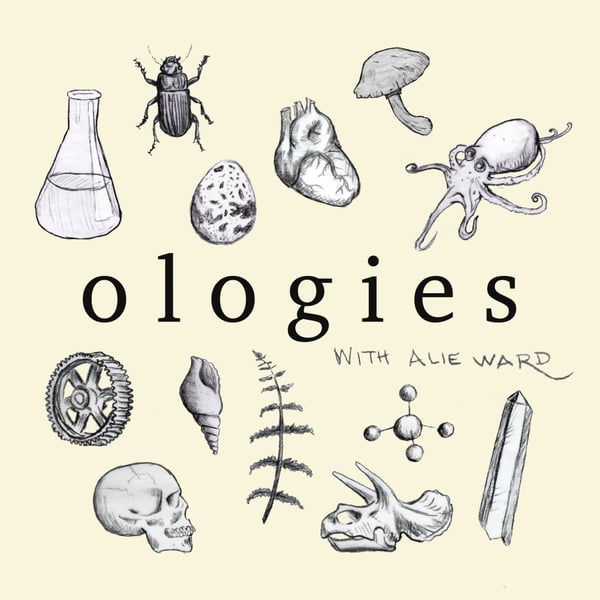Eco-Odorology (SCIENCE-SNIFFING DOGS) with Kayla Fratt
Ologies with Alie Ward
Alie Ward
4.9 • 23.8K Ratings
🗓️ 22 January 2025
⏱️ 64 minutes
🧾️ Download transcript
Summary
Transcript
Click on a timestamp to play from that location
| 0:00.0 | Oh, hey, it's that thing in the backyard that you meant to do something with, but now it got rained on. |
| 0:04.9 | It's Allie Ward. This is Ologies. This is a show that is seldom about dogs except for now, as this is a bit of a companion episode to last week's ethnocinology episode about dogs being your companions. How Wolves Went to Dogs. |
| 0:18.8 | So this week, we are following up with a wonderful new guest |
| 0:22.0 | on how science and conservation partners with dogs to do the work that we cannot. So yes, dogs can |
| 0:29.8 | not only smell narcotics in a duffel bag, they can also let us know how plants and animals |
| 0:34.6 | are faring in the wild. So this guest shot or shot by tagging me |
| 0:37.9 | in some excellent videos about her work in conservation. And look where we are now. We've got a whole |
| 0:41.8 | episode. So as a second year PhD student at Oregon State University, they travel the world, |
| 0:46.6 | studying wolves on islands in Alaska, jungle cats, and so much more. And as a founder of a nonprofit |
| 0:53.4 | group called K-9 conservationists, |
| 0:56.1 | this ologist coined the term eco-otorology, which can involve dogs detecting little plants, |
| 1:02.8 | mold, invasive species. They detect bat and bird fatalities on wind farms, invasive zebra |
| 1:10.6 | muscles, carnivore populations, cheetahs in Kenya, |
| 1:14.4 | bobcats in the foothills, and they're trained to find so much more. |
| 1:18.7 | So this episode is a bit of a treat because we recorded it in two parts. |
| 1:21.8 | First, I headed to a trailhead in L.A.'s Griffith Park on an absolute squircher. |
| 1:27.3 | Right now, because it's so hot and we're kind of moving back on down, I'm probably going to let him just |
| 1:30.5 | keep this ball and let him, we call this quiet quitting, where he can now go hang out in the shade, |
| 1:37.9 | do whatever he needs to do. He's got his ball. It was over 100 degrees that day, and I was able to |
| 1:43.0 | meet conservation dog barley as we sniffed our way up |
| 1:46.4 | dusty paths and hung out in a cedar grove looking for evidence of coyotes and bobcats. I'm also, |
| 1:53.3 | I'm panting here and there. So was Barley, but Barley didn't have a mic. And I'm sweating everywhere. |
... |
Please login to see the full transcript.
Disclaimer: The podcast and artwork embedded on this page are from Alie Ward, and are the property of its owner and not affiliated with or endorsed by Tapesearch.
Generated transcripts are the property of Alie Ward and are distributed freely under the Fair Use doctrine. Transcripts generated by Tapesearch are not guaranteed to be accurate.
Copyright © Tapesearch 2025.

